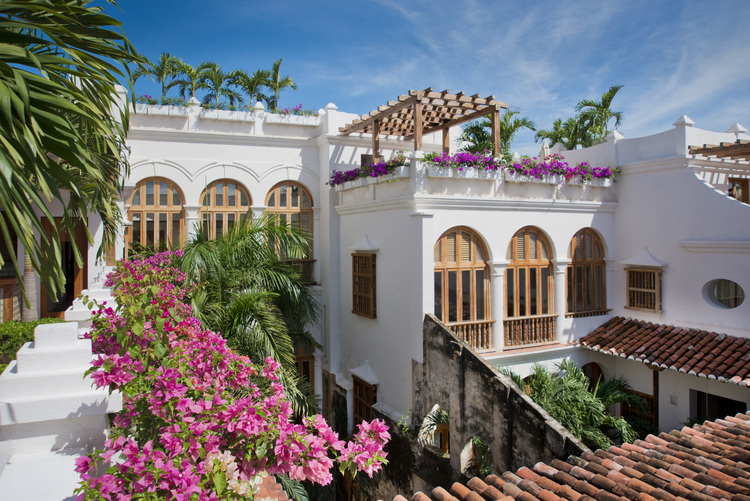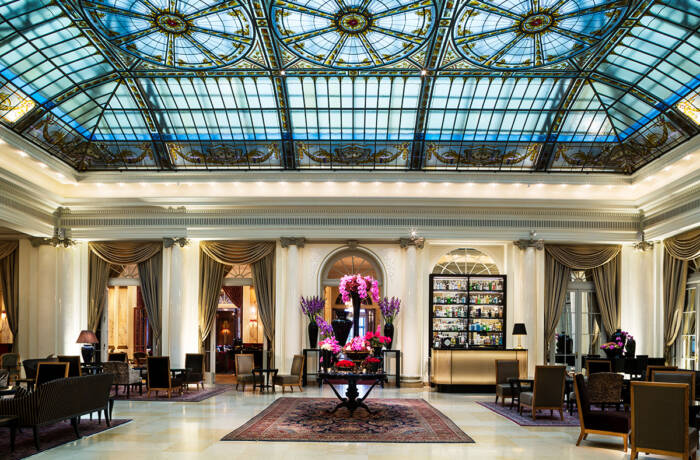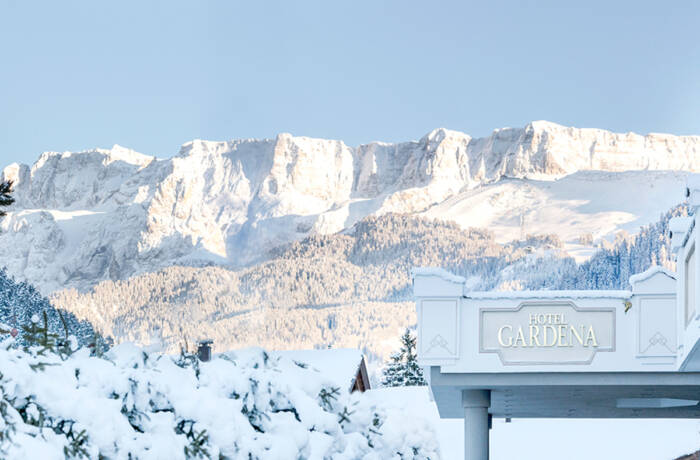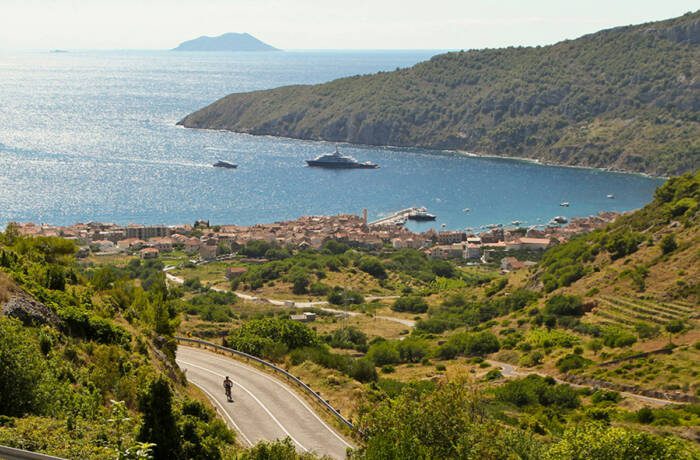Once one of the most dangerous destinations on the globe, Colombia is in the midst of a renaissance. Millie Walton discovers the unique charms of the country’s most beautiful city, Cartagena
The sky is a dramatic swirl of pinks and oranges, as we sail into Cartagena, shimmering off the surface of the sea and melting into the blackness beneath. It’s quiet and still, the water looks velvety and bare. Ahead the city glows. It’s not quite what I imagined. I’d seen pictures of homely looking, colourful streets and had expected a seaside shanty, rather than skyscrapers – naïvely, perhaps for Cartagena, I soon learn, is fiercely fashionable and contemporary, bursting with the old world culture I’d hoped for, but with glossy restaurants and luxurious hotels too.
Read next: The green season in the Alps
 Until recently, Colombia was a no-go zone, riddled with stories of violence, drugs and tourist kid-nappings and for many, that image still remains. I was met with wide eyes and warnings when I first unveiled the plans for my trip. As a result, the country has managed to maintain a secret allure and a feeling of wilderness that’s as liberating as it could be slightly bewildering. If you don’t speak Spanish, you’ll find yourself resorting to gestures and broken phrases. Smiling gets you a long way too. Colombians are, in general, the happiest and most helpful nationality I’ve come across; the most endeared to fresh faces and foreign tongues. Fortunately, I spoke sufficient Spanish to find my way to the old town, a Unesco World Heritage site – the place of the cobbled streets, bright blue walls, and balconies overflowing with bougainvillea. It’s particularly beautiful to wander at night when the heat is more subdued and the squares are filled with music and food stands, people dancing and children playing. Or to just sit and watch the night unfold.
Until recently, Colombia was a no-go zone, riddled with stories of violence, drugs and tourist kid-nappings and for many, that image still remains. I was met with wide eyes and warnings when I first unveiled the plans for my trip. As a result, the country has managed to maintain a secret allure and a feeling of wilderness that’s as liberating as it could be slightly bewildering. If you don’t speak Spanish, you’ll find yourself resorting to gestures and broken phrases. Smiling gets you a long way too. Colombians are, in general, the happiest and most helpful nationality I’ve come across; the most endeared to fresh faces and foreign tongues. Fortunately, I spoke sufficient Spanish to find my way to the old town, a Unesco World Heritage site – the place of the cobbled streets, bright blue walls, and balconies overflowing with bougainvillea. It’s particularly beautiful to wander at night when the heat is more subdued and the squares are filled with music and food stands, people dancing and children playing. Or to just sit and watch the night unfold.
T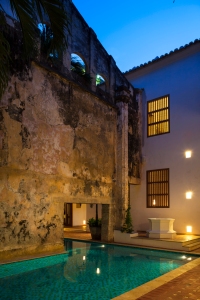 his evening, we wind up in Getsemani, an up-and-coming neighbourhood with a rather sketchy past. Now luxury brands are tiptoeing in with Four Seasons reportedly looking at a property and smart dining options opening their doors. It’s a warren to navigate, but that hardly matters if you don’t mind getting lost. We sip sangria on the tiled rooftop of Malagana Café and Bar to cool down, before heading back to our hotel, Casa San Augstin for dinner at Alma, reportedly one of the city’s best places to enjoy costal Colombian cuisine infused with the head chef, Heberto Eljach’s originality.
his evening, we wind up in Getsemani, an up-and-coming neighbourhood with a rather sketchy past. Now luxury brands are tiptoeing in with Four Seasons reportedly looking at a property and smart dining options opening their doors. It’s a warren to navigate, but that hardly matters if you don’t mind getting lost. We sip sangria on the tiled rooftop of Malagana Café and Bar to cool down, before heading back to our hotel, Casa San Augstin for dinner at Alma, reportedly one of the city’s best places to enjoy costal Colombian cuisine infused with the head chef, Heberto Eljach’s originality.
Read next: An unexpected paradise off the coast of Africa
We ask for a selection of appetisers, too tempted by the menu to be decisive and find ourselves with plates of prawn tempura, hummus – easily the best I’ve ever tasted-, olives and hams. The service is relaxed, perhaps not quite up to fierce and impatient European expectations, but you have to remember you’re in South America. Life has a different pace. I choose fish for my main; plain, steamed with fresh vegetables. It’s not actually on the menu, or something I would necessarily pick as my favourite, but the dynamic chief operating manager at the hotels’ management company, Nicolas Dominguez, insists, telling me I won’t regret it and I don’t. It’s perfect; fresh, light and subtle in flavour, better, as so many things are, without embellishment.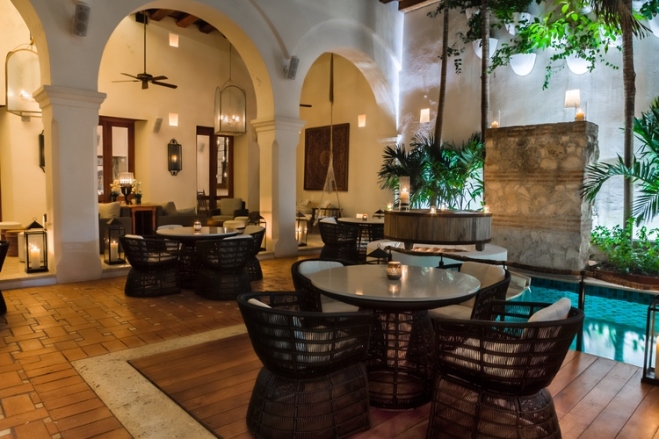
Unsurprisingly, the night leads us to Café Havana, the undisputed favourite spot post 11pm in the city – when the Latin jazz bands start to play and hips sway. Unless you’re British, of course, then the only thing swaying is likely to be your head slightly reeling from one too many shots of the local liquor Aguardiente. It’s a fun place to be, understated and packed with salseros. We find ourselves coerced into an impromptu dance lesson, which leaves us a little flush faced, and exhilarated.
Outside, the streets throb with heat, music and people. We mingle for a while, stretching our Spanish to its limits before slinking back to the calm oasis of Casa San Agustin.

